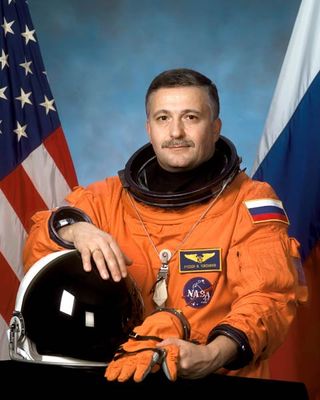Cosmonaut Biography: Fyodor Yurchikhin

NAME: FyodorNikolayevich Yurchikhin (Ph.D)
RSC Energia Test-Cosmonaut
PERSONAL DATA: Born January 3, 1959, in Batumi,Autonomous Republic of Ajara in Georgia. Married to Larisa AnatolievnaYurshikina, born in Shyolkovo, Moscow region. They have two daughters.
His father, Nikolai Fyodorovich Yurchikhin, andmother, Mikrula Sofoklevna Yurchikhina, reside in Sindos, Greece. He also has abrother, 2 years younger. Hobbies include collecting stamps and space logos,sports, history of cosmonautics, and promotion of space. He also enjoys readinghistory, science fiction and the classics.
EDUCATION: After graduation from high schoolin Batumi in 1976, he entered the Moscow Aviation Institute named after SergeyOrdzhonikidze. He finished studying in 1983, and is qualified as a mechanicalengineer, specializing in airspace vehicles. In 2001, he graduated from theMoscow Service State University with a Ph.D. in economics.
EXPERIENCE: Since graduating from the S.Ordzhonikidze Moscow Aviation Institute in 1983, Yurchikhin has worked at theRussian Space Corporation Energia. He began working as a controller in theRussian Mission Control Center, and held the positions of engineer, seniorengineer, and lead engineer, eventually becoming a lead engineer for Shuttle-Mirand NASA-Mir Programs.
In August 1997, he was enrolled in the RSC Energiacosmonaut detachment as a cosmonaut-candidate.
From January 1998 to November 1999, he completed hisbasic training course. In November 1999, he was qualified as a test cosmonaut.In January 2000, he started training in the test-cosmonaut group for the ISSprogram.
Get the Space.com Newsletter
Breaking space news, the latest updates on rocket launches, skywatching events and more!
In October 2002, FyodorYurchikhin flew aboard STS-112. In completing his first space flight he haslogged a total of 10 days, 19 hours, and 58 minutes in space.
Fyodor Yurchikhin is assigned to command the Expedition-15mission to the InternationalSpace Station, arriving at the complex aboard a Soyuz spacecraft scheduledto launch in April 2007, for a six month tour of duty aboard the Station.
SPACE FLIGHT EXPERIENCE: STS-112Atlantis (October 7-18, 2002) launched from and returned to land at theKennedy Space Center, Florida. STS-112 was an International SpaceStation assembly mission during which the crew conductedjoint operations with the Expedition-5by delivering and installing the S-One Truss(the third piece of the station's 11-piece Integrated Truss Structure).
Three spacewalks were required to outfit and activatethe new component. The crew also transferred cargo between the two vehicles andused the shuttle's thruster jets during two maneuvers to raise the station'sorbit. STS-112 was the first shuttle mission to use a camera on the ExternalTank, providing a live view of the launch to flight controllers and NASA TVviewers. The STS-112 mission was accomplished in 170 orbits, traveling 4.5million miles in 10 days, 19 hours, and 58 minutes.
Last updated: November 2006
- Space Station Mission Coverage
- Complete Coverage: ISS Expedition 15
- Learn More About the International Space Station
- All About Astronauts
Join our Space Forums to keep talking space on the latest missions, night sky and more! And if you have a news tip, correction or comment, let us know at: community@space.com.

The National Aeronautics and Space Administration (NASA) is the U.S. government agency in charge of the civilian space program as well as aeronautics and aerospace research. Founded in 1958, NASA is a civilian space agency aimed at exploring the universe with space telescopes, satellites, robotic spacecraft, astronauts and more. The space agency has 10 major centers based across the U.S. and launches robotic and crewed missions from the Kennedy Space Center in Cape Canaveral Florida. It's astronaut corps is based at the Johnson Space Center in Houston. To follow NASA's latest mission, follow the space agency on Twitter or any other social channel, of visit: nasa.gov.
